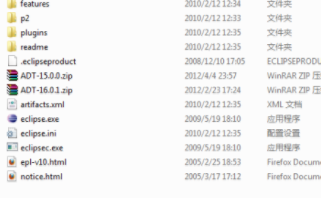本文实例分析了Android TabHost选项卡标签图标始终不出现的解决方法。分享给大家供大家参考,具体如下:
在学习Android TabHost布局过程中,很多教程告诉我,这样来显示选项卡标签的图标和文字:
|
1
2
3
4
|
TapSpec spec1 = tabHost.newTabSpec("tab 1");spec1.setIndicator("选项卡一", getResources().getDrawable(R.drawable.tab_icon));spec1.setContent(R.id.tab1);tabHost.addTab(spec1); |
折腾来折腾去,setIndicator(label, drawable)这个方法始终不能将标题文字与图标一起显示出来,只有文字标题。
在没将电脑砸了之前,通过万能的stackoverflow.com终于知道确切答案以及相应方法了:
http://stackoverflow.com/questions/10745092/icon-in-tab-is-not-showing-up
其实就是SDK 4.03(冰激凌)下:只有文字标题显示,图标是不显示的。如果将文字标题设置为空字符串,则此时图标可显示。
对于冰激凌下两全其美的方法,只能是自定义标签卡布局,创建一个包含ImageView和TextView组件的界面布局文件 tab_indicator.xml(layout/tab_indicator.xml),然后用setIndicator(View view)方法来设置TabSpec的界面布局。
|
1
2
3
4
5
6
7
8
9
10
11
12
13
14
15
16
17
18
19
20
21
|
<?xml version="1.0" encoding="utf-8"?><RelativeLayout xmlns:android="http://schemas.android.com/apk/res/android"android:layout_width="0dip"android:layout_height="64dip"android:layout_weight="1"android:orientation="vertical"android:background="@drawable/tab_indicator"android:padding="5dp"><ImageView android:id="@+id/icon"android:layout_width="wrap_content"android:layout_height="wrap_content"android:layout_centerHorizontal="true"/><TextView android:id="@+id/title"android:layout_width="wrap_content"android:layout_height="wrap_content"android:layout_alignParentBottom="true"android:layout_centerHorizontal="true"style="?android:attr/tabWidgetStyle"/></RelativeLayout> |
接着我们可以在drawable图片资源目录下创建一个tab_info.xml文件,用来指示Tab图标的各状态。
|
1
2
3
4
5
6
|
<?xml version="1.0" encoding="utf-8"?><selector xmlns:android="http://schemas.android.com/apk/res/android"><item android:drawable="@drawable/tab_info_dark"android:state_selected="true" /><item android:drawable="@drawable/tab_info_light" /></selector> |
现在就可以通过下面的代码将我们自定义的视图作为一个indicator配置给TapSpec对象。
|
1
2
3
4
5
6
7
8
9
10
11
12
|
private void addTab(String label, int drawableId) {Intent intent = new Intent(this, MockActivity.class);TabHost.TabSpec spec = tabHost.newTabSpec(label);View tabIndicator = LayoutInflater.from(this).inflate(R.layout.tab_indicator, getTabWidget(), false);TextView id="codetool">
像以下方式那样调用上面那自定义addTab方法
注意:当用自定义视图的indicator来添加Tab时,要将strip_enabled属性设置为false。若要兼顾底部strip,那在添加最后一个Tab后设置 希望本文所述对大家Android程序设计有所帮助。 原文链接:https://www.cnblogs.com/lovecode/articles/2652510.html 延伸 · 阅读
精彩推荐
|















